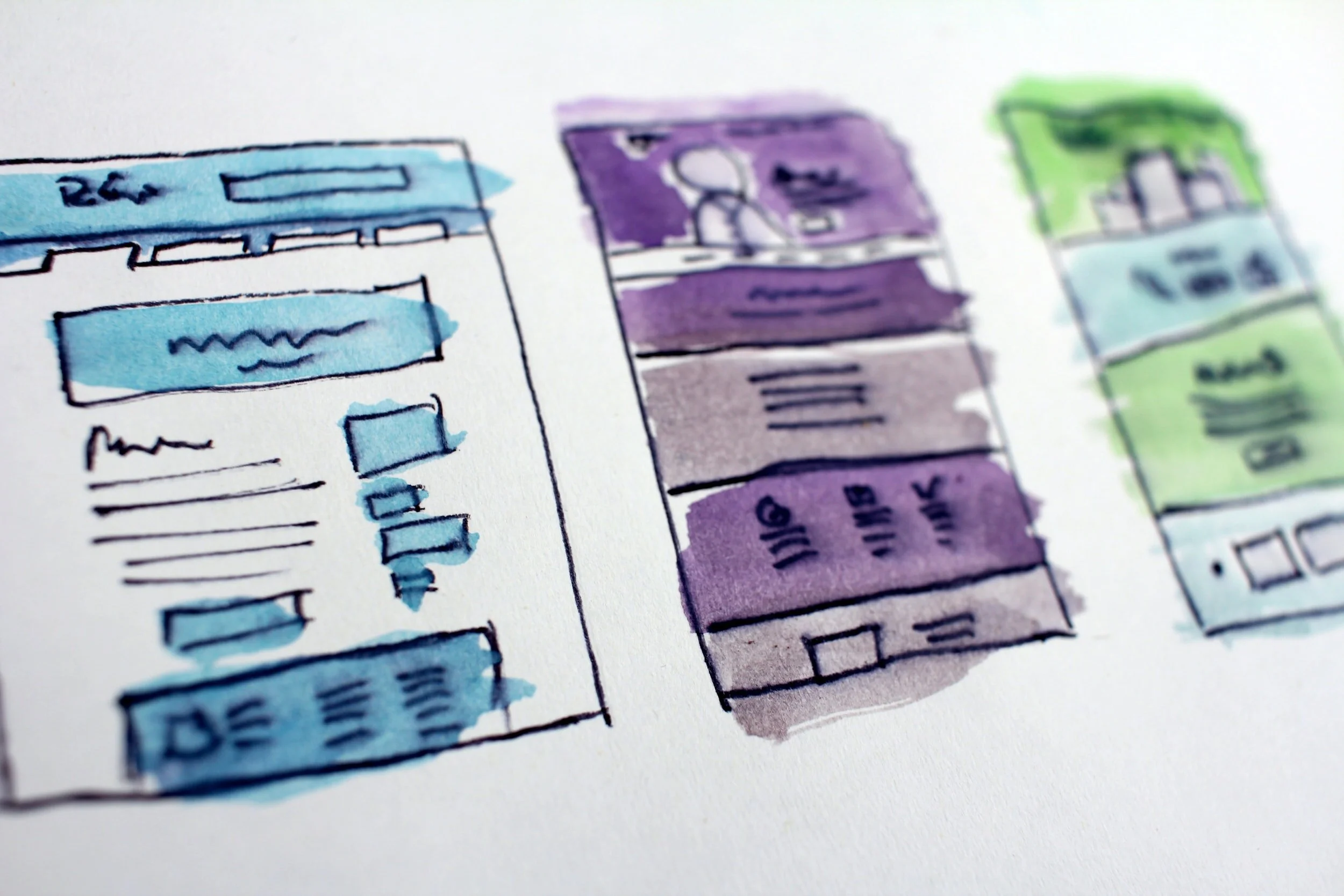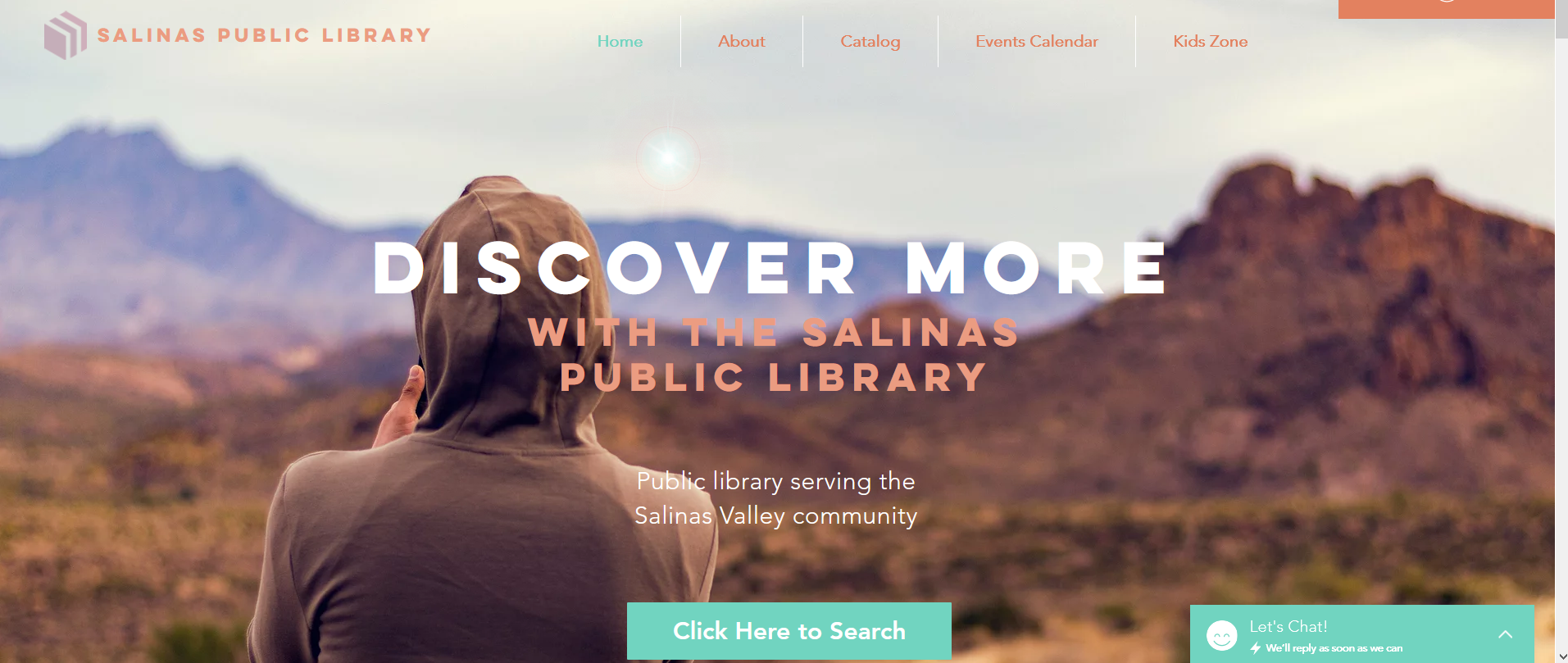Web Design for Libraries: Why It Still Matters
In a Web 2.0 world, it’s tempting to think that social media should be a library’s main online contact point with patrons. Spoiler alert: it isn’t.
Think of social media like signage in your library building. It reaches out to patrons and points them towards areas of interest. Think of your library’s website as the physical building itself. It contains (hopefully well-organized) multitudes, offering a wide array of information, services, and resources. It is the central hub of information for patrons as they access library content on their laptops or mobile devices. Both social media and websites offer ways to reach patrons which compliment, instead of replace, one another.
Social media and websites offer ways to reach patrons which compliment, instead of replace, one another.
It goes without saying that all public libraries in the year 2021 should have some type of active social media presence. This presence requires planning, strategy, and commitment to reaching patrons where they are online in an engaging and effective way. This is easier said than done, but there are countless examples of libraries across the nation doing social media well. Really well. Find those libraries and “Follow” them on their Instagram, Facebook, Twitter, or other channels. Learn about which channels tend to reach different demographics of your community population, and plan your efforts and resources accordingly.
Follow any professional social media account for long enough, and you will find that they inevitably will link back to a main website, blog, or channel. These links lead followers to a desired behavior, be it making a purchase, or simply reading a blog post or watching a video where the creator has monetized their efforts with ads. For libraries, the end goal may be getting their community to take advantage of resources and services. The best library social media presence is best backed up by an amazing library website.
The best library social media presence is best backed up by an amazing library website.
The library website should be like the library building itself: uncluttered, organized, accessible, and inviting to the general public. As in the library, it contains information that points either to direct use (online research databases, eBooks, or links to partner streaming services, for example) or future use (a physical book in a library’s catalog, or an upcoming event listing). As with any library material, the better organized and identified it is in the overall collection, the easier it is to find.
The goal of library web design should be to guide patrons to information they need - in as few clicks as possible. One wouldn’t want to walk into a library building and have to go through five different contact points just to find a book or service. Library website visitors don’t want to do this either! People generally click away in frustration from any cumbersome website that hides the information they’re looking for. Library users should never be more than one or two clicks away from the most important library information or resources.
When is the last time your library evaluated their main website?
Website evaluation and maintenance should be a planned, regular occurrence. AKA, don’t let 2-10 years lapse before your library’s website sees it’s next glow up. It should be ever-evolving and responsive to the times. Why not put student library workers at the helm of a new blog or podcast to feature on your website (and, by extension, on social media and in e-mail blasts)? Why not use a social media photo challenge to generate new imagery to feature on the website? Let the community offer online feedback to help improve the library’s online presence, then evaluate this feedback and put it into action! Work closely with a web developer to explore new possibilities as technologies advance.
There are any number of proactive steps that libraries can take to ensure their website is not a relic, but a living, breathing online extension of your library' information ecosystem. Perhaps it would even help to think of it as its own branch, as people increasingly make their first searches not at a reference desk, but at home.
Laying out website content and goals, exploring various web hosting platforms to suit individual library needs, test-driving software before committing, seeking reviews, discovering pricing, examining resources, and taking stock of long-term needs and related costs are all part of the library website creation process. The needs of varying user populations must be taken into account. Libraries may consider exploring accessibility software add-ons like acessiBee to allow patrons to browse with seizure-safe, vision impaired, cognitive disability, ADHD, and blindness profiles. Patrons can also readily adjust page language, font size, and contrast and color settings with this add-on. Check out Corkcicle’s website to test drive the software for yourself (just click on the black circle icon at the lower left side of their website).
No matter how a library decides to stay with the times (a new Chat function on the website, a new Instagram account), it must be sustainable. Realistic ideas of how time will be devoted to maintaining and managing each new endeavor must be examined before anything new is launched. New online chat function? Make sure staff libraries have the time in their schedule to respond to messages promptly. New social media account? Establish a content creation calendar and make staff of all levels responsible for some piece of it. If there’s one thing worse than a library having no social media pages at all, it is having ones that haven’t been updated in 8 months. As totally harsh as it sounds: fail to prepare, and you prepare to fail. Make a plan for sustainable success!
Library Web Design: The Salinas Public Library
The Salinas Public Library is a public library system serving the residents of Salinas, California. This is not their website (I just liked the name).
The website you see here was created as a project for the course Integrating Technologies while earning my Master of Library and Information Science degree. Our objective: to work independently to create a library website containing a prescribed number of pages, links (internal and external), and relevant details (such as library hours and location). For me, the most informative part of this project was actually what came before it. In a separate project, we researched an evaluated the websites of three different library systems using a wide variety of criteria. With this critique, I learned what worked about the library websites I visited, and what was simply not ideal or appealing through a 2020 lens.
I saw overcrowded and confusing main pages, social links not mentioned until the bottom of the website, and did I mention way too many clip-art style tree and nature-inspired logos? I used my critique of what was already out there to inform what would and what wouldn’t work for my library’s website. The first step of creating this website happened well before I touched a single pixel on the page. Research was the first step. The second was creating a sitemap. Once the basic structure of the website was sketched out, I set up the navigational header and footer (each including social links), and established the overall “look and feel” with a carefully chosen color scheme, font, and photos (all found through Unsplash). Since I enjoy writing, I authored all of the body copy and created testimonial quotes from happy patrons. In real life, I would love to see more libraries incorporating patron feedback and praise in this way on their websites and social media.
During five several hours long sessions creating a library website, pages were constructed and filled in, glitches were encountered and addressed to the best of my and the platform’s (Wix.com) ability, and the library website project was complete! Except for the fact that today, some months since its completion, I still see room for improvement. A constant growth mindset is a good philosophy in life, but it essential in web development. A website is not a museum piece, to be enclosed in a glass case and admired. It is a lump of clay, to be constantly tweaked, updated, and reworked. The art of communication is a living, breathing thing.
The art of communication is a living, breathing thing.
How does a library keep on learning how to communicate online? Here are a few ideas:
Research the best library websites.
Evaluate them, seeing what works and what doesn’t (in desktop and mobile view).
Implement what you’ve learned as your evaluate and grow your own library’s website.
Get buy-in from library leaders at all levels (librarians, library assistants, student staff, and community members) to generate and implement new ideas to make the library more accessible online.
Follow the best library (and community) social media accounts, and use these as inspiration for your library. This will help drive traffic to your library’s awesome online and in-house resources.
Repeat to make constant improvements and progress.
Main Photo by HalGatewood.com on Unsplash
Additional screenshots by Lorelle S.









